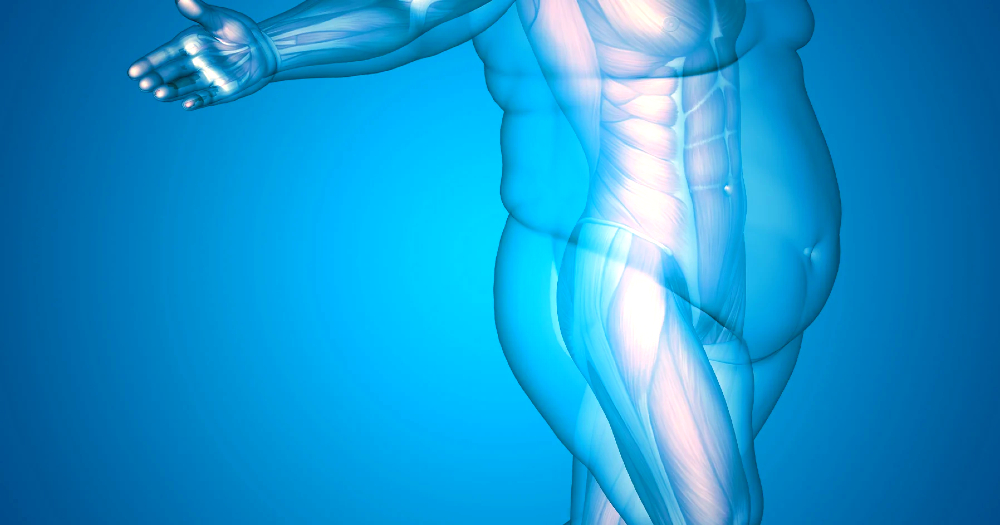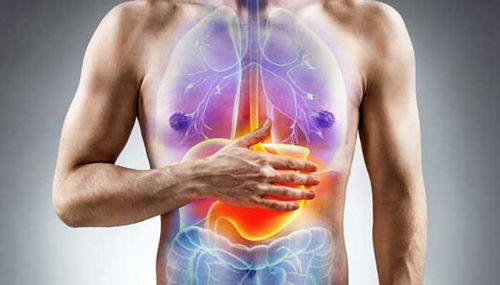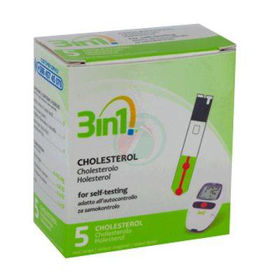Atherosclerosis - arteriosclerosis or calcification of the veins - is an inflammatory disease that causes scarring of the vessel walls, mainly due to the long-term formation of fatty deposits and calcifications.
ATHEROSCLEROSIS: General about atherosclerosis | Symptoms | Causes | Arterial calcification | Diagnostic Procedures | Treatment | Prevention | Questions and Answers | Sources/references
Atherosclerosis is one of the most common cardiovascular diseases.
It is widespread in developed countries. There is more and more evidence that it is related to diet and lifestyle, which justifies the assumption that it can be prevented or at least stopped, and in some cases, even changed for the better.
Image: Atherosclerosis is the accumulation of fats, cholesterol, and other substances in and on the walls of the arteries.
.jpeg)
Depending on the location and degree of arterial damage, atherosclerosis can lead to kidney problems, high blood pressure, stroke, and other life-threatening conditions. In atherosclerosis, the aorta - the largest artery in the body leading from the heart - and the arteries leading to the brain, lower limbs, and kidneys are most often affected.
Damage to the arteries that supply the limbs and feet causes painful walking, and severely limited blood flow to the limbs can cause leg ulcers and even gangrene (tissue death). A blockage in the coronary arteries, which bring oxygen-rich blood directly to the heart muscle, causes coronary artery disease, also called coronary artery disease.
Video content: Atherosclerosis - pathogenesis, risk factors and complications.

This disorder and its complications - angina pectoris, cardiac arrhythmias, and heart attacks - are the leading causes of death in most developed countries.
Symptoms of atherosclerosis
Atherosclerosis, in its early stages, has no symptoms. Defective or partially blocked blood vessels can cause one or more of the following symptoms and signs:
- Dull, cramping pain in the buttocks, thighs, and shins during movement can be a sign of atherosclerosis in the area of the pelvis or legs
- sudden onset of local paralysis, tingling or numbness in a limb, partial loss of vision or speech can reveal cerebral atherosclerosis that can lead to a stroke
- angina pectoris, a feeling of tightness or intense pressure on the chest, can be a sign of atherosclerosis in the coronary arteries
Consult your tax advisor if:
- You experience angina pectoris pain for the first time, or angina pectoris attacks become unstable - each of these events is serious and requires immediate medical attention
- You have Discolored skin on the feet, ulcers, or sudden sharp pain in the legs and feet while you are at rest - this can be a sign of severe atherosclerosis and possibly a blockage in the blood circulation that requires immediate treatment to prevent gangrene.
- Notice an unexplained loss of balance, speech coordination, or vision - any loss of these abilities indicates a temporary cessation of blood flow to the brain. This condition can lead to stroke if left untreated.
Causes of atherosclerosis
Arterial plaques begin to form as thin, fatty streaks in the wall. In people with a healthy lifestyle, these lines can appear and disappear. But if the arteries are damaged - usually due to high blood pressure, stress, or smoking - the inner surface of the vessel wall can begin to deteriorate.
Image: The chemicals you inhale when you smoke damage your heart and blood vessels, making you more likely to develop atherosclerosis or plaque build-up in your arteries.

To prevent this, the artery creates new tissue, which can cause small lumps or scars. Cholesterol, white blood cells, and other deposits accumulate on them, creating plaques that clog the arteries.
Eventually, the calcium deposits and scar tissue surrounding this soft plug cause the arteries to become stiff and inflexible. Because atherosclerosis progresses slowly over several years, it is usually seen as a nuisance in the elderly.
However, many studies show that arterial plaque accumulates in childhood and that most plaque is formed by age 30. Although the stages of atherosclerosis are precisely defined, the causes of its formation are not entirely clear. People who have high blood cholesterol, especially low-density lipoproteins (LDL), have a high risk of developing atherosclerosis.
Cholesterol LDL - i.e., the type that creates arterial plaque - can react with unstable chemical components called free radicals in a complicated situation. This process impairs cholesterol transport through the bloodstream and destroys the innermost arterial layer. However, most people with high cholesterol do not develop atherosclerosis, and many have normal cholesterol levels.
Image: Obesity causes chronic inflammation, contributes to atherosclerosis, and causes more than 3.4 million deaths yearly.

Artery walls can be damaged by high blood pressure, carbon monoxide in tobacco smoke, and stress. One of the studies proved that people in a war-torn country had much more plaque on their arteries if they were constantly exposed to the possibility of direct conflict.
While virtually everyone among us can expect to have some plaque on our arteries eventually, certain factors influence our susceptibility to atherosclerosis:
- Age: Atherosclerosis affects people over 35, although it can start much earlier.
- Sex: premenopausal women are at much less risk than men of the same age to develop atherosclerosis, and after menopause, the risk is practically the same for both sexes.
- Heredity: a family history of atherosclerosis increases the risk of developing this disease.
- Obesity: obese people are more prone to atherosclerosis, probably because this group of people is more likely to have high cholesterol levels and high blood pressure.
- Lifestyle: lack of physical activity is closely related to atherosclerosis and, finally, also to the development of coronary heart diseases.
Arterial calcification
Inside a normal artery, a layer of muscle lines the endothelium, the smooth inner layer through which blood flows. In some people, streaks or bumps of fatty deposits begin to appear on the endothelium. After a certain period, the continuous deposition of fat causes arterial wall inflammation. Finally, a complex, calcified plaque is formed, which can completely block the blood flow.
Video content: Development of atherosclerosis.

Diagnostic procedures
Doctors usually look for characteristic symptoms of blocked arteries in different body parts as signs of atherosclerosis. To determine the location and extent of the blockage, the doctor may order angiography, an X-ray showing the arterial lining on an X-ray or film.
To diagnose atherosclerosis or calculate the risk of its development, the doctor will be able to perform the following services:
- A thorough physical examination includes using a stethoscope to listen to the heart and blood flow through the arteries.
- Questions about your medical and family history: this information can help show your risk for atherosclerosis and its complications.
- Questions about your lifestyle: Your doctor may ask about lifestyle factors such as past or present use of tobacco products, activity level, and diet.
- Blood tests: heart blood tests show cholesterol levels and many details about how the heart works.
Image: An echocardiogram (echo) takes pictures of the heart's valves and ventricles and measures how well the heart is pumping.
.jpg)
Your doctor may order additional tests to diagnose atherosclerosis and plan treatment. These tests include:
- Angiography: This test uses special X-rays to locate and measure blockages. Your doctor will inject a contrast dye into your arteries to show the blockages on X-rays.
- Ankle/brachial index: this test compares the blood pressure in the ankle to the pressure in the arm to measure blood flow in the arms and legs.
- Chest X-ray: A chest X-ray takes pictures of the inside of the chest.
- Echocardiogram (echo): An echo takes pictures of the heart's valves and ventricles and measures how well the heart is pumping.
- Electrocardiogram (ECG): An EKG measures your heart's electrical activity, frequency and rhythm.
- Exercise stress test: This test measures how your heart works while physically active.
- Abdominal ultrasound: This ultrasound takes pictures of your abdominal aorta. Check for ballooning (abdominal aortic aneurysm) or plaque build-up in your aorta.
- Carotid ultrasound: This test takes ultrasound images of the arteries in your neck (carotid arteries). He can detect the hardening or narrowing of these arteries as blood flows to the brain.
- Computed tomography scan: This scan takes pictures of the inside of your body and can show any hardening and narrowing of the large arteries.
Treatment
After managing the symptoms of the disease, the first step in treatment is to reduce or eliminate risk factors for atherosclerosis. So, for example, you will be advised to reduce the intake of saturated fats through proper nutrition, which will also reduce the further formation of vascular plaques.
Image: There are several surgical procedures available to repair damaged arteries.
.jpg)
If you have high blood pressure, you should lower it, e.g., through weight loss, regular physical activity, or stress reduction. Diabetic patients need to control their blood sugar levels well. Smokers must quit smoking.
Conventional medicine:
No medication can directly cure atherosclerosis, although you may be prescribed to treat conditions that accelerate atherosclerosis, such as high blood pressure, blood clots, and cholesterol problems. Several surgical procedures are available to rehabilitate damaged arteries: sections of blocked arteries can be opened, plaques that block the lumen can be removed, or the damaged part of the artery can be replaced.
One of the more common operations is a bypass, in which blood flow is diverted past the blockage using an artery graft or a synthetically made artery. Balloon angioplasty is a non-surgical procedure in which the artery is reopened by spreading the lining and pressing it against the vessel wall.
Many other techniques use catheterization, lasers, and vascular stents - thin, cylindrical wire meshes - to reopen the arteries to some acceptable state for successful operation.
Alternative ways
Since diet and lifestyle are essential factors in both the development and prevention of atherosclerosis, alternative methods can achieve a range of improvements that control it.
Ayurvedic Medicine
Ayurvedic treatment involves a combination of diet, herbal remedies, relaxation, and exercise. Consult a specialist to select a treatment program.
Chinese herbs
Many combinations of Chinese herbs are recommended, including sedum (Ledebouriella divaricata), bellflower (Platycodon grandiflorum), and Chinese gorse (Bupleurum chinense) in appropriate combination. Consult a Chinese medicine practitioner.
Herbs
Herbs against atherosclerosis are typically intended to reduce existing plaques or to improve the functioning of blood vessels, which reduces the possibility of plaque formation. Hawthorn (Crataegus laevigata) is one of the best herbal anti-plaque remedies as it is known to strengthen the arteries. Its flowers, leaves, and berries can be boiled as a tea but can also be bought as an extract or tincture.
Video content: Naturally unclog the arteries in the heart: 7 ways to clean the arteries!

Phytotherapy uses medicines derived from plants or herbs to treat or prevent medical conditions. Medicinal plants and herbs are a form of complementary medicine. These are therapies that you can receive in addition to traditional Western medicine.
Angioplasty
Balloon angioplasty is a procedure used to open blocked coronary arteries and restore normal blood flow. A catheter is inserted into one of the arteries in the arm or the groin and then pushed up to the affected area in the artery.
The catheter is placed right next to the lining. At the end of the catheter is a thin, uninflated balloon. When the balloon is inflated, it splits the lining and presses it against the arterial wall, restoring normal blood flow.
Homeopathy
Only an experienced homeopath can prescribe various medicines for the long-term treatment of atherosclerosis. The diagnosis and prescribed medication will mainly depend on assessing the patient's condition.
Way of life
Dr has proven the benefits of lifestyle improvements. Dean Ornish with his multi-year program for heart patients. The program is based on strict vegetarianism, regular exercise, and stress reduction. After completing the program, as many as 82% of the participating patients had a detectable reduction in plaque in the coronary arteries.
Medicine of mind and body
Since stress is attributed to accelerating the formation of atherosclerosis, therapeutic relaxation techniques can prevent or at least slow the formation of plaques; several approaches can help with relaxation, including yoga, meditation, guided imagery, and biofeedback.
Nutrition
Changes in diet and lifestyle, if introduced early enough and adhered to, can prevent or reduce the consequences of atherosclerosis. The diet should be low in cholesterol and saturated fat but high in antioxidants, neutralizing free radicals that cause tissue damage.
Image: Consult your doctor or dietician to take vitamins safely.

The essential antioxidants are vitamins E and C, beta carotene (vitamin A), and selenium, which can be toxic in high doses. Be moderate when taking vitamins; too much vitamin D can, for example, accelerate the formation of calcifications on arterial linings.
Extracts of grape skins and Commiphora (Commiphora mukul), an herb from southern India, reduce plaque build-up. Alfalfa (Medicago sativa) and bromelain, an enzyme found in pineapples, are said to have the same effect in experimental animals and probably in humans.
Over the past 30 years, many studies have confirmed that moderate alcohol consumption - a glass or two of wine daily - can protect against atherosclerosis and coronary artery disease. One study showed that the flavonoids in grape skins, which give red wine its color and flavor, stop the build-up of fatty deposits.
Chelation treatment: no final verdict yet
Thousands of Americans seek help from chelation therapy each year because of atherosclerosis - far more than patients who undergo surgery (bypass). EDTA is injected into the patient's bloodstream in chelation treatment. One of the theories claims that chelation removes calcium from the arterial lining, while another says that EDTA acts as an antioxidant.
While chelation therapy has proven successful in treating problems such as lead poisoning, it is still questionable in cardiovascular disease. Proponents say that compared to other types of treatment, chelation is safe, relatively cheap, and effective. Critics mainly blame it on the lack of reliable scientific evidence and claim that chelation treatment is ineffective and even dangerous (some early attempts at chelation treatment failed kidneys).
Video content: What is chelation therapy? Does it work to reduce plaque build-up in the arteries?

This type of treatment requires about 10 to 40 chelation sessions, costing several thousand dollars. Until chelation therapy passes the results of at least one scientific study, doctors will continue to be divided in their judgments about its effectiveness. However, when scientists can provide adequate answers, chelation will become standard or remain a historical record.
Prevention
Atherosclerosis occurs when hereditary predispositions meet known risk factors. If you have a family history of atherosclerosis, it is very wise to accept what you cannot change and change what you can.
Here are some tips:
- change your diet to be low in fat, low in salt, and high in fiber - taking particular care to avoid saturated fat and cholesterol
- if you smoke, stop immediately
- find out what your blood pressure is - if it's high, lower it
- ensure regular and moderate physical activity - take a 30-minute walk, swim, or cycle - several times a week and even every day if possible
- please choose a program that relaxes you and somehow include it in your daily tasks
- if you have a family history of high risk, make sure you see a cardiologist regularly
Questions and answers
What are the most common causes of atherosclerosis?
The most common causes are:
- high blood pressure
- high cholesterol
- high triglycerides
- inflammation of unknown cause or disease
- smoking or chewing tobacco
- diabetes
- insulin resistance
- obesity[1]
Is atherosclerosis a life-threatening disease?
If the lining ruptures, blood clots can form that can completely block the artery or travel to other parts of the body. Complete or incomplete blockages can lead to complications, including heart attack, stroke, vascular dementia, erectile dysfunction, or limb loss[2].
Image: Atherosclerosis increases the risk of heart attack and stroke.
.jpg)
Atherosclerosis can cause death and disability.
Can weight loss help treat atherosclerosis?
A low-carbohydrate, low-fat diet, and a Mediterranean diet have been effective in helping obese people reverse carotid atherosclerosis after moderate weight loss and improvement in blood pressure[3].
Which tests detect atherosclerosis?
Tests include:
- Angiography: This test uses special X-rays to locate and measure blockages. Your doctor will inject a contrast dye into your arteries to show the blockages on X-rays.
- Ankle/brachial index: this test compares the blood pressure in the ankle to the pressure in the arm to measure blood flow in the arms and legs.
- Chest X-ray: A chest X-ray takes pictures of the inside of the chest.
- Echocardiogram (echo): An echo takes pictures of the heart's valves and ventricles and measures how well the heart is pumping.
- Electrocardiogram (ECG): An EKG measures your heart's electrical activity, frequency and rhythm.
- Exercise stress test: This test measures how your heart works while physically active.
- Abdominal ultrasound: This ultrasound takes pictures of your abdominal aorta. Check for ballooning (abdominal aortic aneurysm) or plaque build-up in your aorta.
- Carotid ultrasound: This test takes ultrasound images of the arteries in your neck (carotid arteries). He can detect the hardening or narrowing of these arteries as blood flows to the brain.
- Computed tomography scan: This scan takes pictures of the inside of your body and can show any hardening and narrowing of the large arteries[4].
Can the occurrence of atherosclerosis be prevented?
Atherosclerosis can be prevented by reducing risk factors. This includes adopting a healthy lifestyle, such as eating a healthy diet, losing excess weight, being physically active, and quitting smoking[4].
Sources and references
- Atherosclerosis - https://www.hopkinsmedicine.org
- What Is Atherosclerosis? - https://www.nhlbi.nih.gov
- Weight-loss diets may reverse atherosclerosis in obese, overweight people - https://www.sciencedaily.com
- Arteriosclerosis/atherosclerosis - https://www.mayoclinic.org












 Facebook
Facebook
 Instagram
Instagram
 info@moja-lekarna.com
info@moja-lekarna.com

